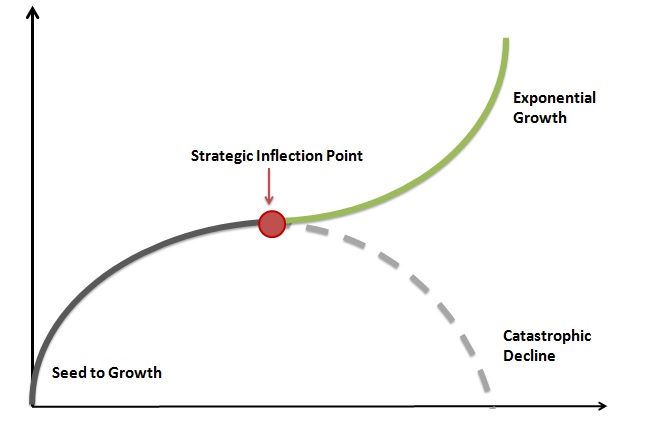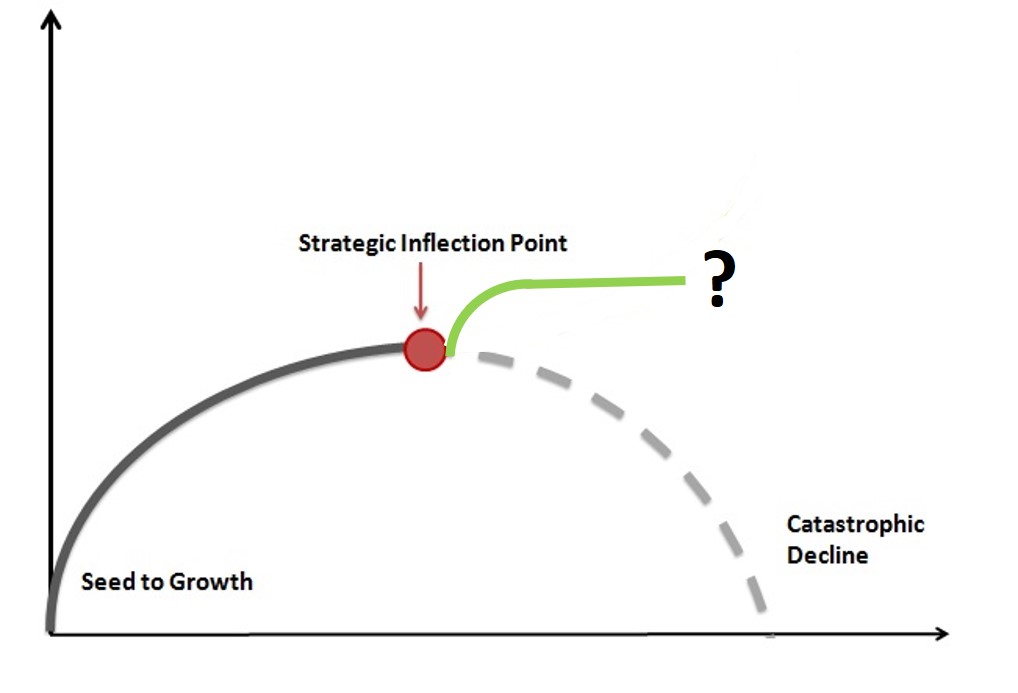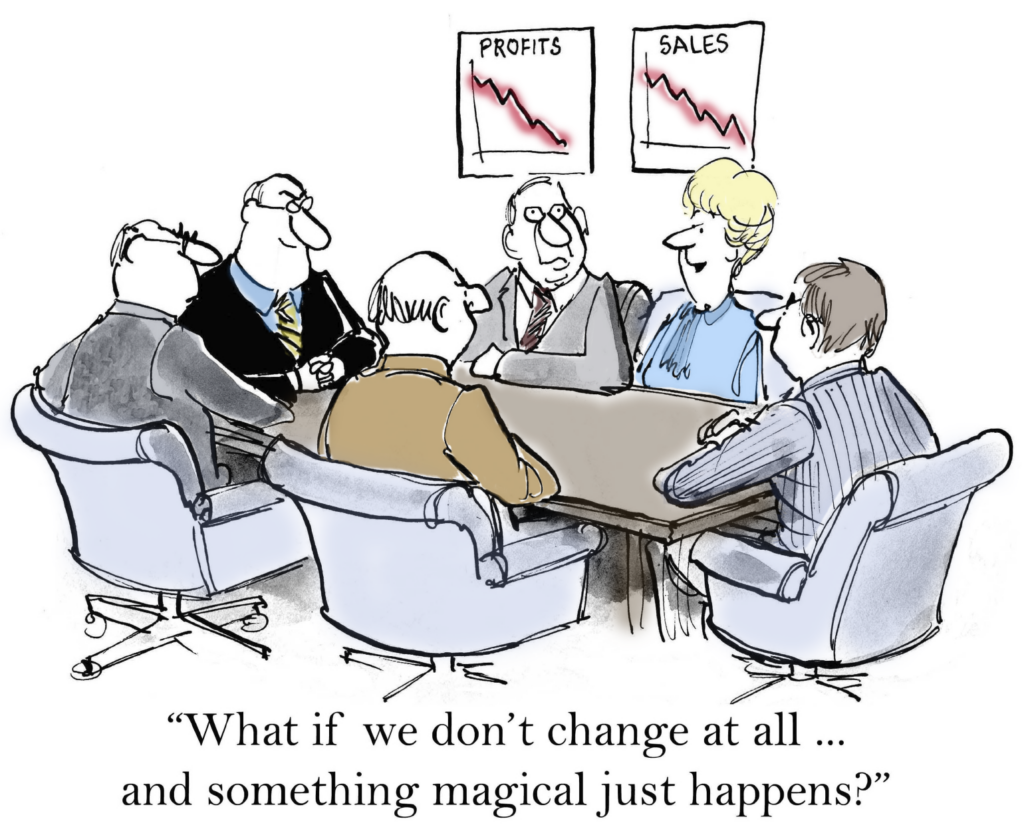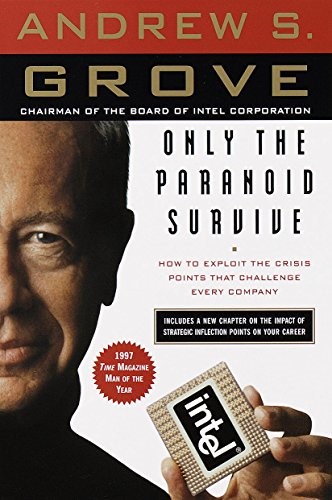Between 1990 and 1998 during my employment at Intel Corporation I had the chance to work under Andy Grove as CEO. Andy was certainly not an easy character and very demanding too. But aren’t all successful company leaders, who have continuously moved their companies forward, like this? One of Andy’s favorite topics, which I do not only remember, but which has also strongly influenced my professional career until today, is the “Strategic Inflection Point”. Andy writes about it in his book “Only the Paranoid Survive”. Of course, you can ask yourself now, how significant all this is today, because this book is almost 25 years old. Today, companies are managed differently, there are new insights and new theories. However, I would like to counter this with the fact that in my whole professional career since I left university up to the present day I have repeatedly encountered this strategic inflection point with all its effects, in both a positive and negative sense.
What is a strategic Inflection point?
There are countless definitions and articles about the strategic inflection point. Just search for “Strategic Inflection Point” in Google, and you will be busy with this topic for the next few months. But to save you a bit of time, here is a definition that Andy Grove himself used in a speech in August 1998:
“Let’s start with Strategic Inflection Points. They represent, in my description of it, what happens to a business when a major change takes place in its competitive environment. A major change due to introduction of new technologies. A major change due to the introduction of a different regulatory environment. The major change can be simply a change in the customers’ values, a change in what customers prefer. (…) But what is common to all of them and what is key is that they require a fundamental change in business strategy, and that’s almost a definition of a Strategic Inflection Point. A Strategic Inflection Point is that which causes you to make a fundamental change in business strategy. Nothing less is sufficient.”
Important here is the term “fundamental change”. Because if the company does nothing, this usually has far-reaching consequences, up to the disappearance of the company from the market (“Catastrophic Decline”). However, if the company does everything right, it will ideally see a solid growth curve again, just like before the strategic inflection point.

The principle of the S-curves
The principle of the so-called S-curves has been used in innovation management for many years and is the basis of many theories in the field of corporate strategy. Theory is one side, the real world very often is the other one. But in this case, in my view, theory and reality are pretty much in line. There are opinions that a company can survive in the long term without significant growth and without changes or adjustments to its business strategy. I don’t believe in this, because while working for various companies and even as a self-employed person I have experienced all phases of this curve, with all its positive and unfortunately also negative effects. And at none of those companies I worked for the curve was just horizontal for a significant time frame. To be fair, however, I have to say that I am referring primarily to the IT industry. There are certainly several companies in other, less innovation-driven industries that can survive well in the longer term without significant growth and without major strategy changes. But if I think about it a bit longer, maybe in other industries simply the cycles are longer. A good example here is the German automotive industry these days, who is probably at a strategic inflection point after a long time of continuous growth.
Good and bad examples
Especially in the IT industry, there are countless examples which confirm the theory of the strategic inflection point in a sometimes even frightening way. One of the best-known examples is probably Nokia. When the Nokia management was still celebrating the record year of 2007, still being the market leader for mobile phones, in the same year Apple already had started the success story of the smartphone with the introduction of its first iPhone. This in turn was the beginning of the end for Nokia as the top dog in the mobile phone market. Like many others, I used one Nokia model after the other and it was unimaginable that already after a relatively short time nobody would remember Nokia or its brand. The younger generation doesn’t anyway. Here it was a new revolutionary technology that completely changed the market environment and customer behavior. Apple generally in its history has (almost) always been very good at anticipating the strategic inflection point, often creating completely new markets in this process. Instead of fighting the competition in a “red ocean”, new “blue oceans” have been discovered. iPod, iPhone and iPad are very good examples for this. The father of success has always been Steve Jobs, another charismatic leader like Andy Grove. When Apple pushed him out, things didn’t really move forward any longer and later even went downhill. When he came back, he made Apple what it is today. His quote “There is one more thing…” for me still stands as the symbol of a new strategic inflection point for Apple and very often for the whole industry. I personally think that Apple is again on the verge of a strategic inflection point. Unfortunately, Steve Jobs cannot be brought back into the company this time and it will be interesting to see how things continue there.
Leading the organizational change
However, a new idea, a new product or the development of a new market alone is not enough. Almost always, a change in business strategy is accompanied by profound changes in the organization of the company. This is no longer such a drastic event for companies like Intel or Apple, as they have already gone through such cycles several times. But even in those companies that have been on the market for a longer period of time, changes in strategy usually result in changes in the organization that no longer suit one or the other employee and ultimately cause him or her to leave. Unfortunately, this is very often seen then exclusively as a negative trend. I see it quite differently. Every era of a company has its protagonists, just like a football team. When a new era comes, it needs a few new players. Joachim Löw, the coach of the German national soccer team, was criticized a lot for excluding a few of the “old” players. But also here a big change is happening. After all, many of the 2014 world champions were also those who, just four years later, failed so miserably already in the preliminary round. Löw had finally recognized this strategic inflection point. Perhaps a little late, but not too late. I know that this comparison could be a bit misleading, but in my view it describes quite well what the problem is in companies that also have to reposition themselves. In these situations, companies first of all need experienced managers to accompany and lead the change. The goal must always be to take most of the organization with you, but perhaps not everybody. And you must also be open to bringing in new expertise and new talent from the outside.
There is always a first time
Such processes are always most painful for start-up companies that have developed and grown rapidly, and which never have seen anything else than this rapid growth. They have launched a product, accidentally or even planned, that hits the market like a bomb. Growth rates of 50% and more per year let the management focus almost exclusively on managing this growth. That means you are actually always running behind in meeting the rising demand. This usually leaves little or no time to think about the future. Why should you? Everything is going just fantastic. Until you suddenly notice that all growth flattens out at some point and eventually comes to an end. The earlier you recognize this trend, the more time you have to tackle and plan the necessary changes. The longer you wait, the more painful it will be or, in the worst case, even impossible. Suddenly you realize that your own success has also brought your competitors to the scene, who want a piece of the pie and may be just about to bypass you, as they can already offer a better solution to the problem you have originally identified. Further developments were put on the back burner, as you were more than busy serving the customers with the product that was selling so well. It is also easy to forget that a market is not infinitely large. Initially there is the low hanging fruit, which can be picked without much effort. But then you have to stretch yourself more and more to harvest the other fruit further up the tree. That means the effort needs to be much bigger for the same result. Or the other way around, with the same effort you get much less and sooner or later nothing at all. But then you might be already on the “Catastrophic Decline”.
Avoid the catastrophic decline
In order not to let it get to that point, you must adjust your strategy early enough. Short term you can do the following:
- Establish new sales channels
- Develop new customer segments for the existing product
- Enhance the existing product for new customer segments
- Enter new geographical markets
But all of the above also costs money and energy, you don’t really achieve the new long-term growth and the curve then looks more like this:

With this you only shift the actual problem a bit into the future and you win some time. What you need is a new idea, preferably an idea like the one that has made the company so successful until recently. But that is typically not as easy as it sounds. The existing business must be kept running including all new activities like the ones listed above, while the company needs to reinvent itself in the background.
The organization needs to be agile
This takes a lot of energy from everybody involved and creates a lot of turmoil within the organization. The change-resistant part of the workforce speaks out and you hear the usual statements that are poison for any advancement of the company:
- “We’ve never done this before.” – The absolute classic!
- “Why wasn’t I involved in this decision?”
- “How is this supposed to work?”
- “Why are we listening to the ideas of people who just started here?”
- “What’s the point of all this?”
The answers are actually very simple and could sound like this:
- “This is exactly why we’re going to do this.”
- “Because it was not part of your area of responsibility.”
- “You’re welcome to help us make it work.”
- “That’s why we hired these people.”
- “I’ll try to explain it to you.”
Of course, you can take the supposedly more comfortable way, sit out the strategic inflection point and hope for a miracle. However, history has shown that this never really works, especially in the IT industry, but also in general. On the contrary, the road gets bumpier and often leads to the abyss at the end.

Most people will agree with me that working on something new is much more exciting and motivating than hoping for a miracle or even watching the ship slowly sinking. Nobody from the crew should want the latter anyway, otherwise he or she is definitely on the wrong boat and should immediately sign on somewhere else.
Organizations today need to be proactive and flexible, they need to be “agile” to use the key phrase of the last few years. More about this in my blog “Agile work environments”.


